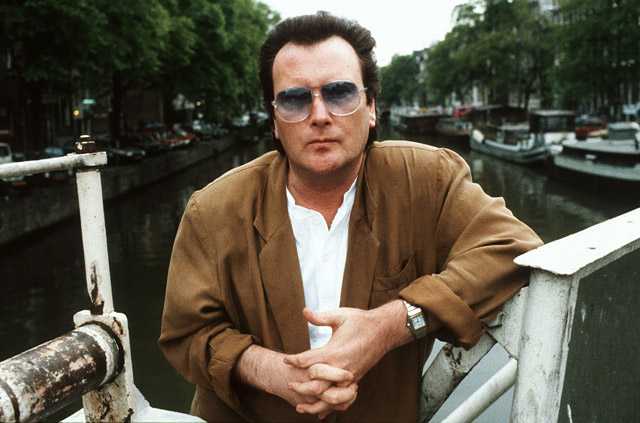
To such an extent is the band Stealer’s Wheel distinguished for being a one-hit wonder, they’re practically famous for not being famous. That lone improbable hit, ‘Stuck In The Middle With You,’ is so familiar for being underrated that it’s basically become overrated (it’s enduring renown is no doubt enhanced, too, by it’s evocative placement in a comically graphic torture scene from “Reservoir Dogs”). Stealer’s Wheel’s co-founder and leader was Gerry Rafferty, the Scottish singer/songwriter whose ensuing solo album, 1978’s “City to City,” was a soft-rock smash that ultimately unseated the “Saturday Night Fever” soundtrack atop the Billboard chart following the paradigmatic disco era album’s uninterrupted reign for 24 weeks. An undiscovered gem it was not.
The record’s undisputed lead track, of course, was ‘Baker Street,’ named for the thoroughfare in London on which Rafferty frequently stayed at a friend’s flat in the intervening three years between the demise of Stealer’s Wheel and the onset of Rafferty’s solo fame. The slow-rolling tune showcases an extremely prominent saxophone, a conspicuous line that has been called the most recognizable sax riff in pop music history (as you’re reading this, I bet you’re already hearing it in your head), which was played by guy named Raphael Ravenscroft, an unheralded, utterly unrecognizable session musician who suggested he play on an alto sax he had stashed in his car a part that was originally intended to be sung or done on guitar. That indelible sound – nothing more than a thrice-repeated, eight-bar part – led to what became known as “the ‘Baker Street’ phenomenon,” a resurgence in the sales of saxophones, and a revival of their use in mainstream pop music and even television advertising. I can really only think of one song to rival it, ‘Turn The Page’ by Bob Seger, whose immediately identifiable sax intro was played by Thomas Cartmell – better known throughout his long Silver Bullet Band career by the brilliant sax player alter-ego, Alto Reed.
Oddly, Rafferty’s breakthrough and career-making hit song contained a cruel irony. Always reclusive, resistant to touring, and aggrieved by the image-obsessed maneuverings of the music industry, ‘Baker Street’ was largely about how uncomfortable he felt as a part of its star system. But when it unexpectedly become a worldwide hit he suddenly found he was a bigger star than ever, only setting him up for more of what he didn’t like. Much of his remaining life, as a result, was marked by struggles with alcoholism and depression. His final record, ironically titled “Life Goes On,” preceded by just two years his death of liver failure in 2011, which itself had followed highly-publicized and contradictory reports over his downward-spiraling behavior and alleged disappearance. Looking back, though Rafferty did put out eight subsequent albums after “City to City,” none came close to matching its sales or notoriety. In a sense, you might say that Gerry Rafferty achieved quite a rare, counterintuitive feat: a one-hit wonder, two times over.
Someone will soon have a problem hearing the song, at least from one side.






Article Comments